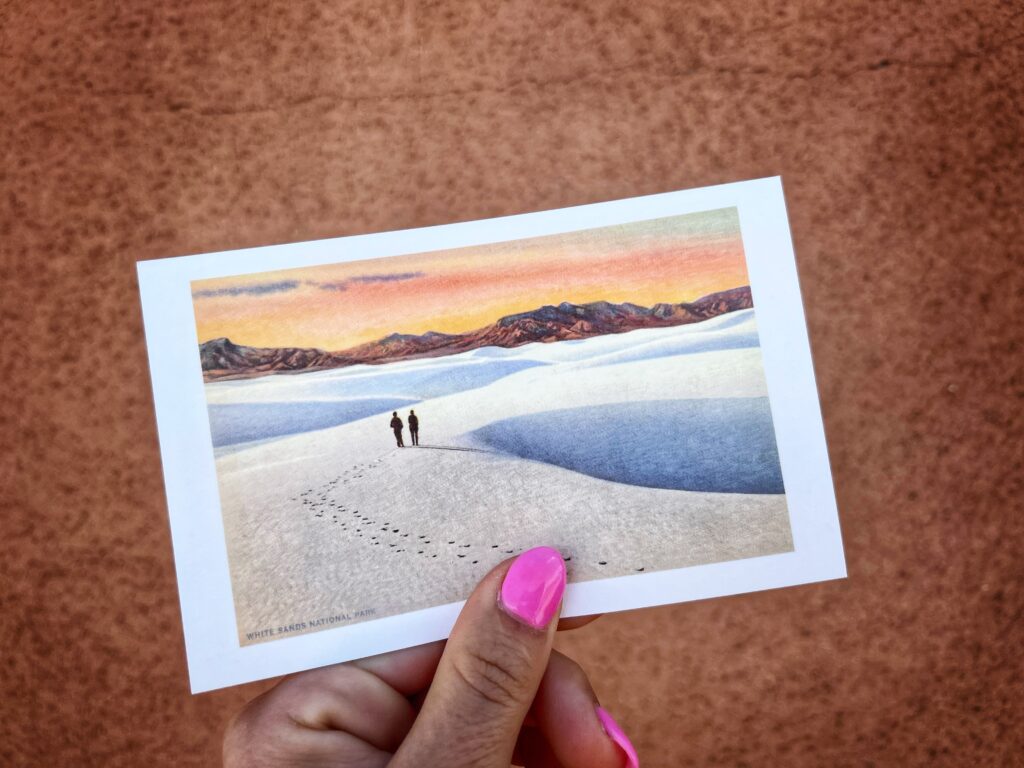
White Sands National Park is a mystical land that is near nothing but a military base where missile testing was founded in the States and a few small mountain ranges in Southern New Mexico. I passed by the opportunity to visit this pristine white landscape several times before finally making it my top destination during a trip to New Mexico. The drive was well worth it.
Read on to see my tips for where to stay, how to capture the best photos & what to take with you to make the most of the sandy adventure.
How were the dunes formed?
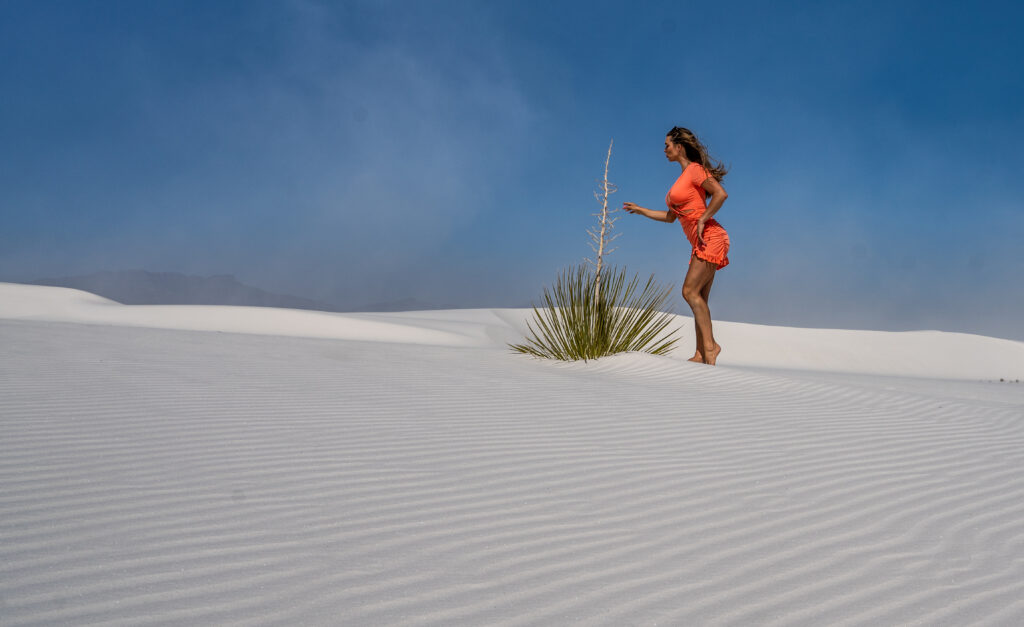
According to NPS.org “Approximately 12,000 years ago, the land within the Tularosa Basin featured large lakes, streams, grasslands, and Ice Age mammals. As the climate warmed, rain and snowmelt dissolved gypsum from the surrounding mountains and carried it into the basin. Further warming and drying caused the lakes to evaporate and form selenite crystals. Strong winds then broke up crystals and transported them eastward. A similar process continues to produce gypsum sand today.”
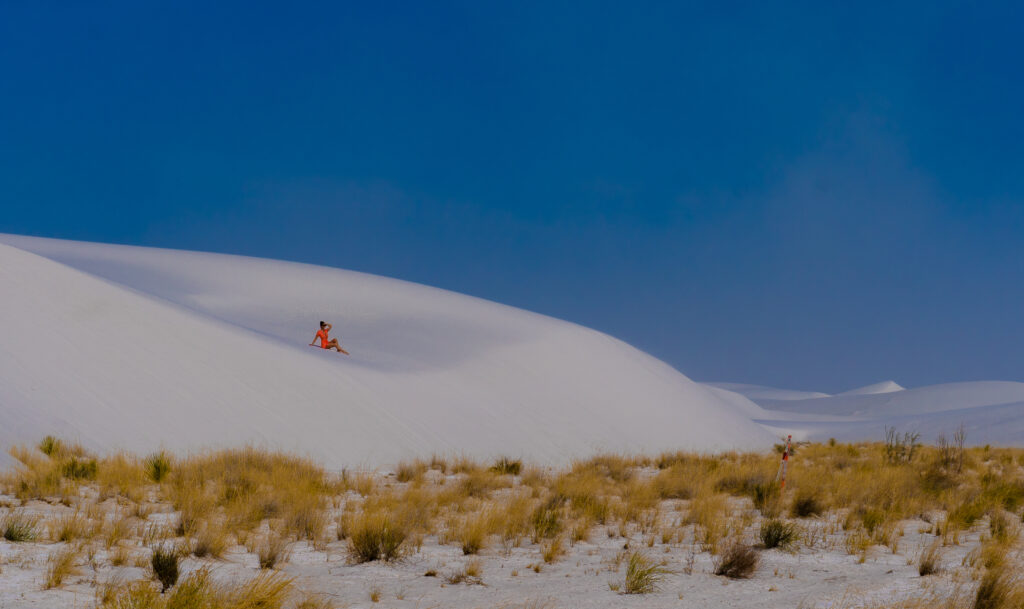
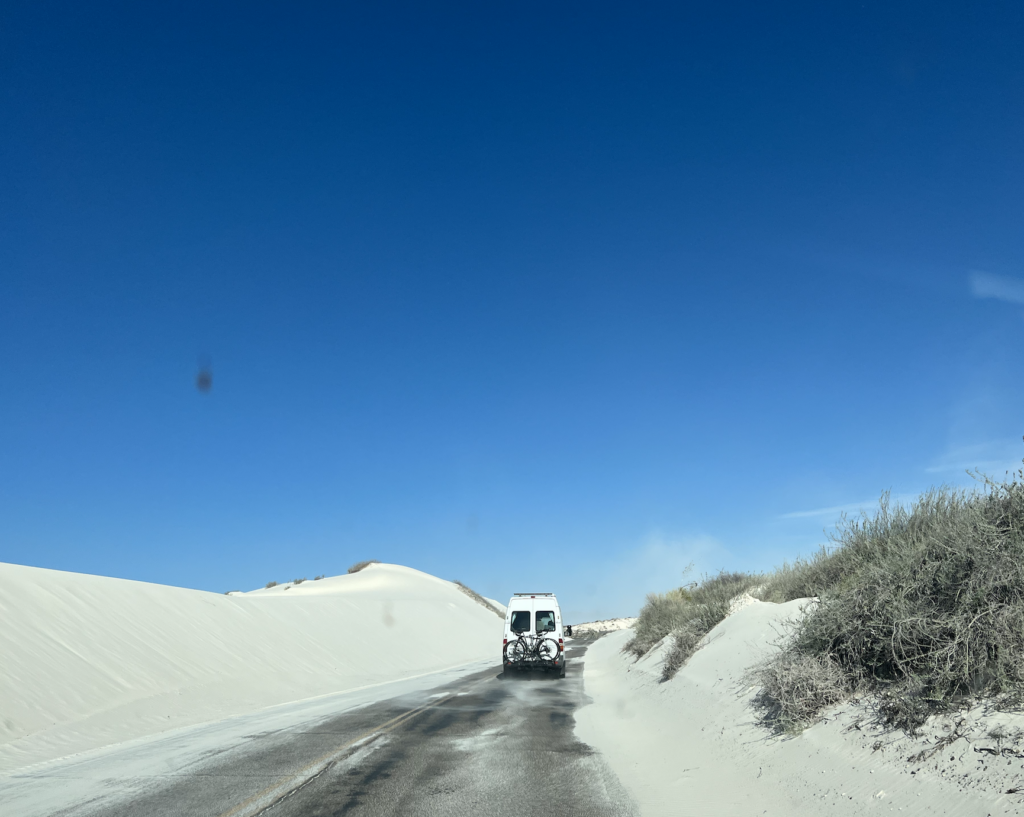
When is the best time of year and time of day to visit?

Time of Year
Knowing when to travel to a desert landscape it is best to check temperatures, wind speeds and expected storms. White Sands is a place where temperatures fluctuate often so click here to see current conditions.
According to parks service these are the expected conditions throughout the year:
June through August, daytime temperatures average 95ºF (35ºC), with some days reaching as high as 110ºF (38º). Evenings are much cooler, ranging from 50-65ºF (10-18ºC). The rainy season begins in early July and lasts into late September. These months bring the majority of our annual 10 inches (25.4 cm) of precipitation. Late afternoon and evening thunderstorms are common. From September through November, daytime temperatures average 80ºF (27ºC), with a low of 65ºF (18ºC). Evenings are cooler, averaging around 40ºF (4ºC). During these months, days are typically sunny with light winds. From December through February, daytime temperatures average 60ºF (16ºC). Evenings are cold, averaging around 23ºF (-5ºC). The occasional winter storm will bring rain and limited snow. March through May, daytime temperatures average about 75ºF (24ºC). Evenings are cool, averaging around 40ºF (4ºC). Spring brings high winds up to 50 mph. Sunny days with strong windstorms are common.
Time of Day
The best times of day to photograph the dunes is in the morning at sunrise or during sunset. I recommend camping in the park over night to capture the perfect sunrise with the mountains juxtaposed against the gypsum dunes or be sure to enter right at 7 when the park opens for the softest light. For sunset photos, be sure to drop a pin at your location, hike a ways out from any of the many parking areas and find some beautiful dunes to start taking photos on. I recommend taking with both the sun shining on the face of your subject and with the subject between you and the camera to create a silhouette.

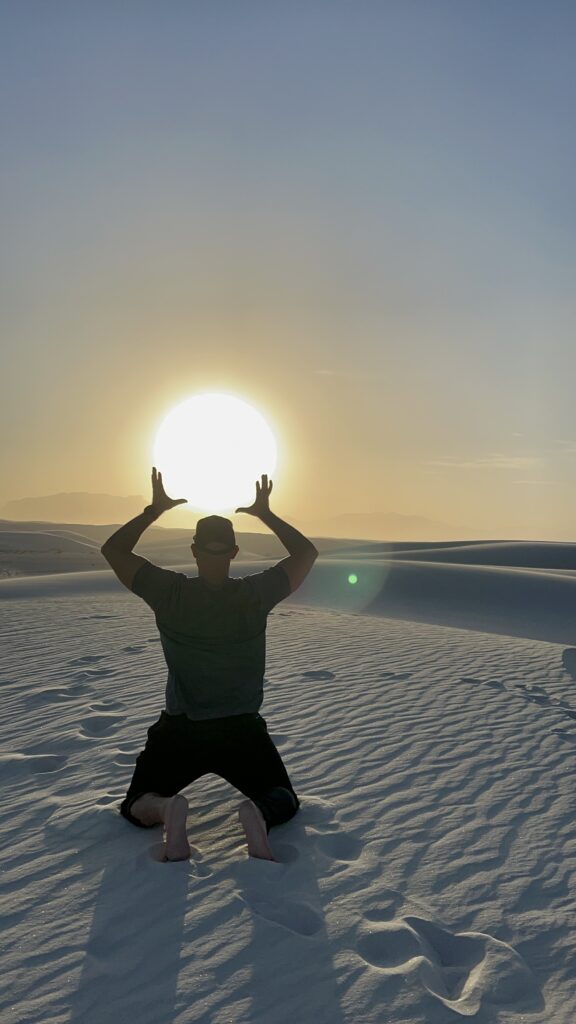
Where to stay and eat?
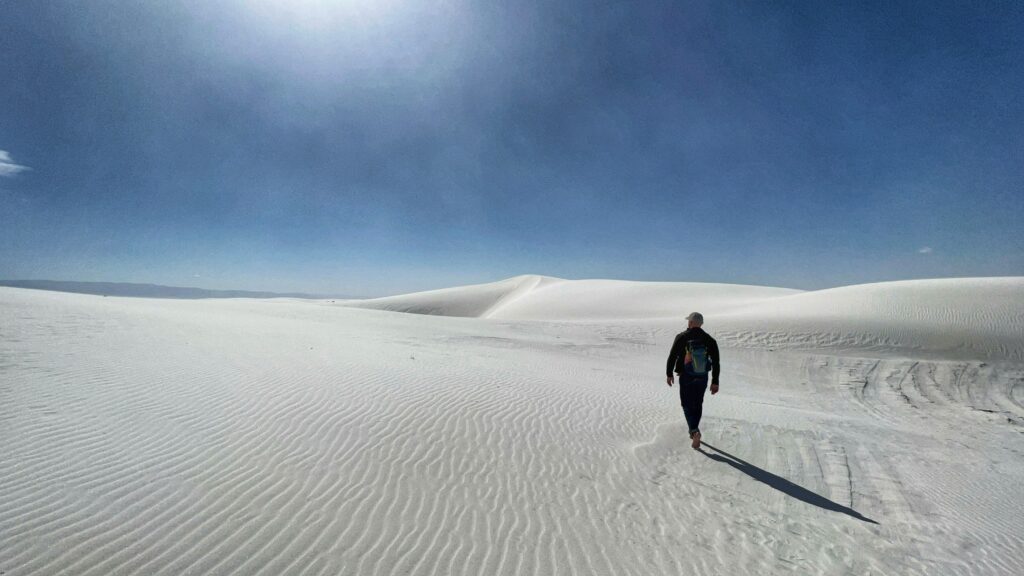
Planning where you are going to sleep and what you are going to eat are two important steps when visiting White Sands.
Eating
The gift shop has a selection of convenient food options including sandwiches, burritos, snacks and beverages. For more dining options, the nearby towns of Alamogordo and Las Cruces have many restaurants and groceries to choose from.
Sleeping
If you prefer a hotel, many options are nearby Alamogordo. White Sands doesn’t offer hotel accommodations or RV/car camping within the park; however, primitive backcountry camping in the heart of the dunes. The back country trail is a 2 mile loop marked with orange posts and the cooler grounds between the dunes make for a perfect block from the wind.
You’ll also find many public and private campgrounds and RV parks within a short drive from the park. The closest public campgrounds are Oliver Lee State Park, about 24 miles southeast. In the summer, the Lincoln National Forest has several campgrounds in the Sacramento Mountains 40 miles away and will be much cooler than any campgrounds in the basin near the park.
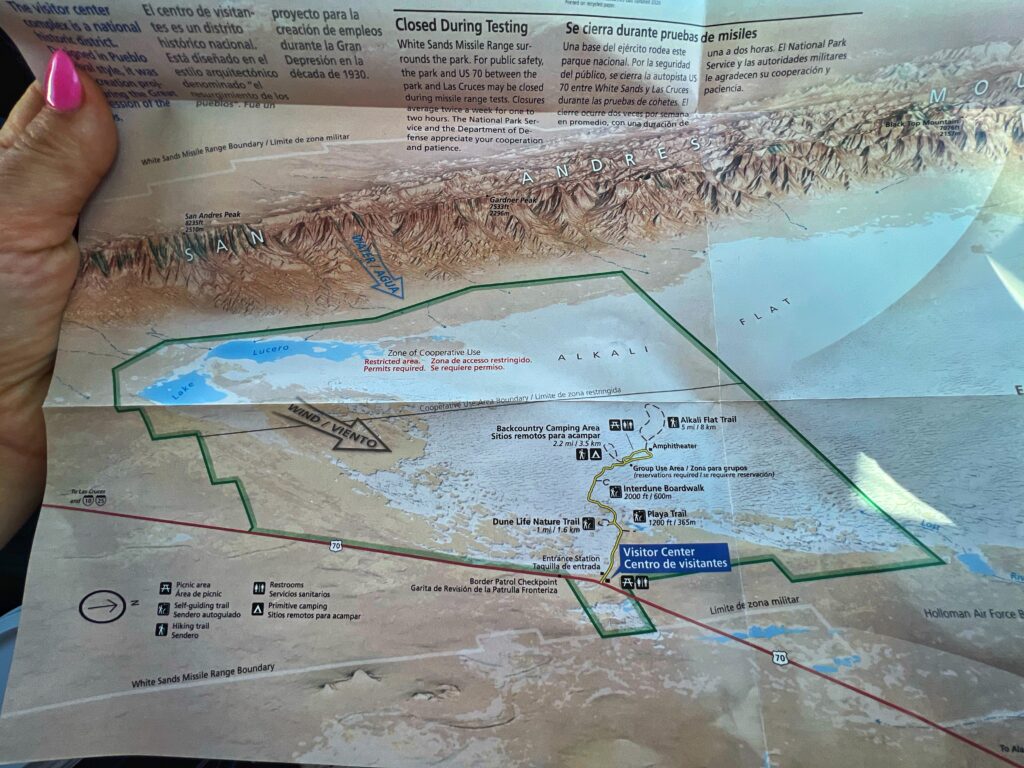
What else do I need to know?
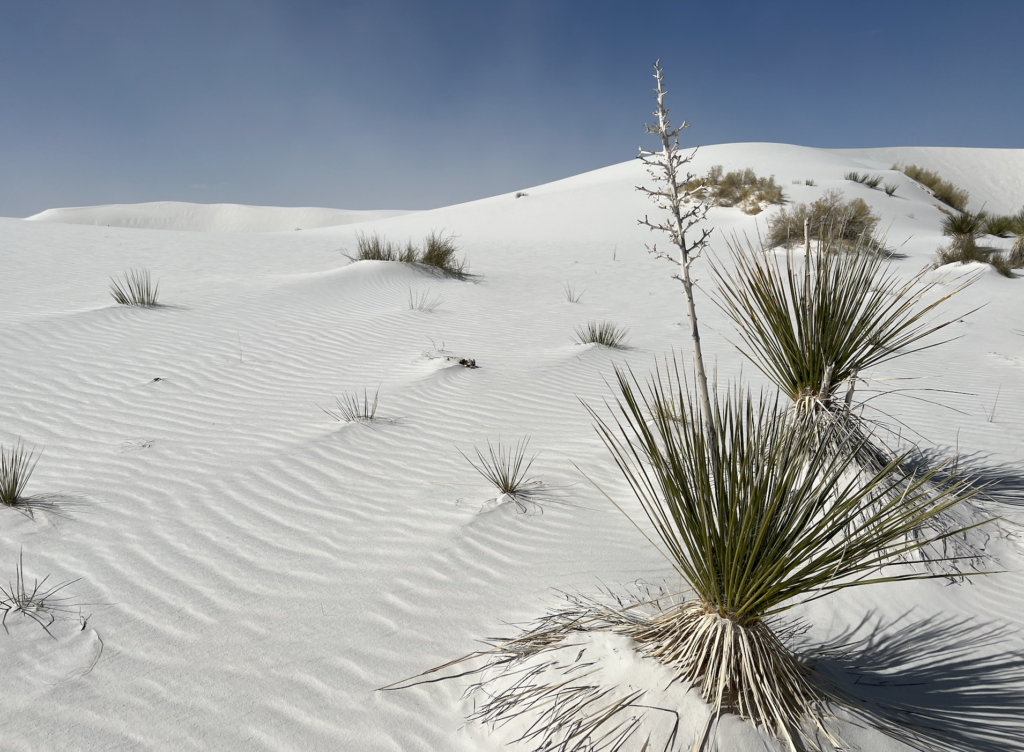
Park Hours
7:00 am to 9:00 pm
Visitor Center Hours
9:00 am to 5:00 pm
(the gate does not stay open 24 hours like at other National Parks)
Entrance Fee
$25.00 per vehicle and valid for seven consecutive days and payable at the entrance booth on Dunes Drive.
Sleds
Sleds can be purchased at our onsite gift shop, White Sands Trading Company, from 9:00 am to 5:00 pm.
Refreshments
Beverages, gifts & snacks may be purchased at the gift shop adjacent to the Welcome Center.
Sun Protection
There is not reprieve from the sunshine at White Sands so be sure to wear protective clothing, a hat and sunblock.

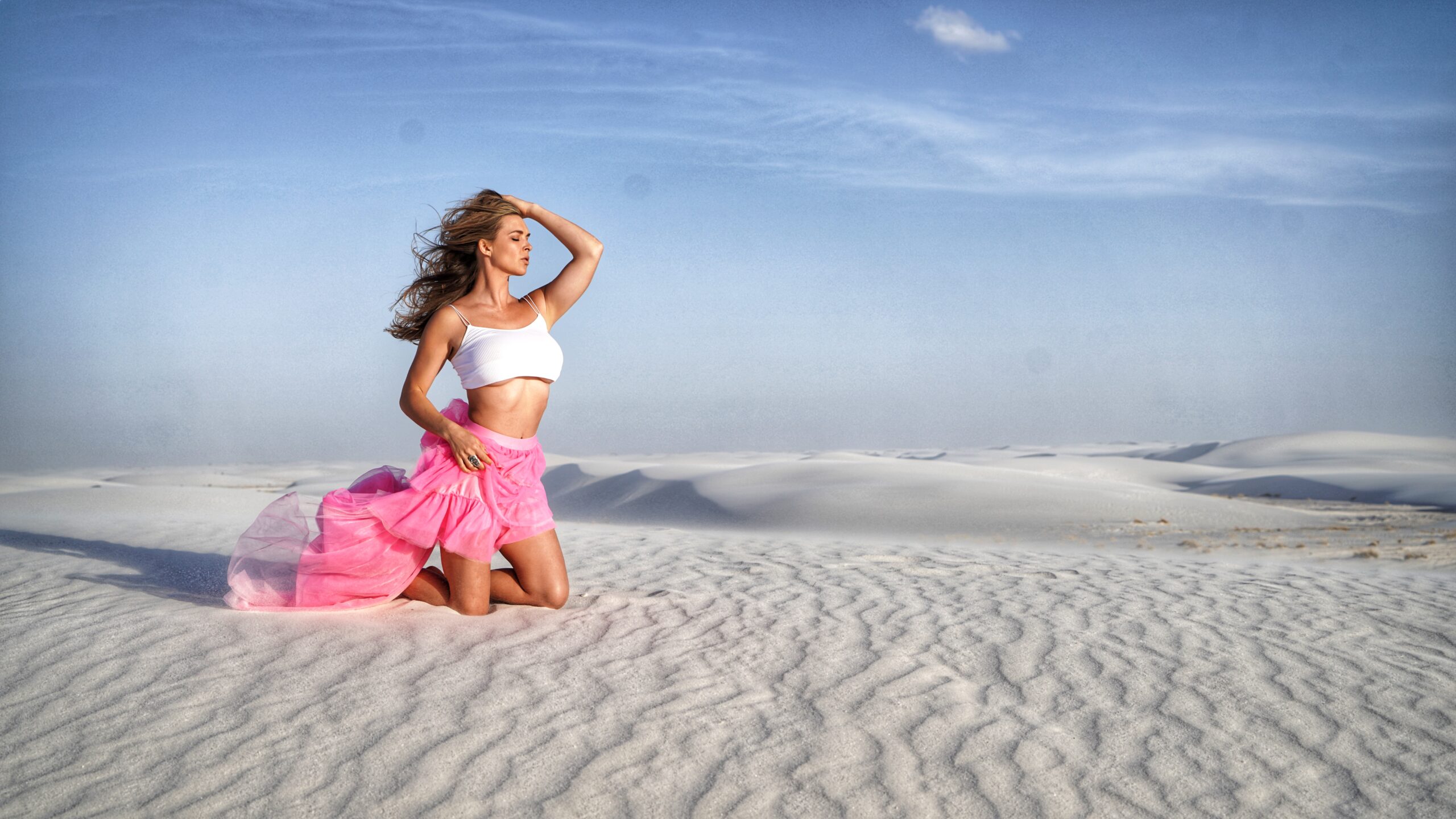
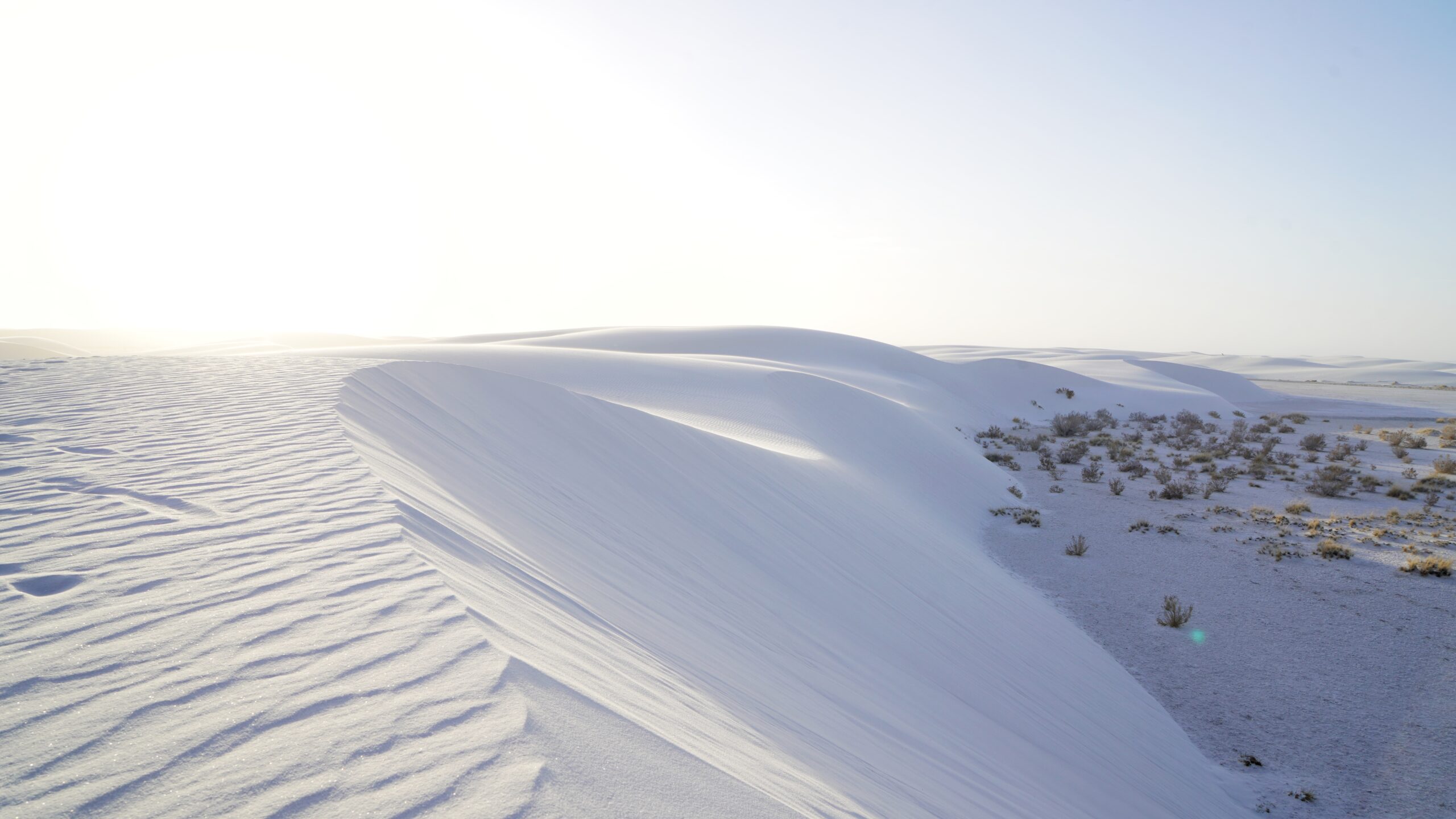
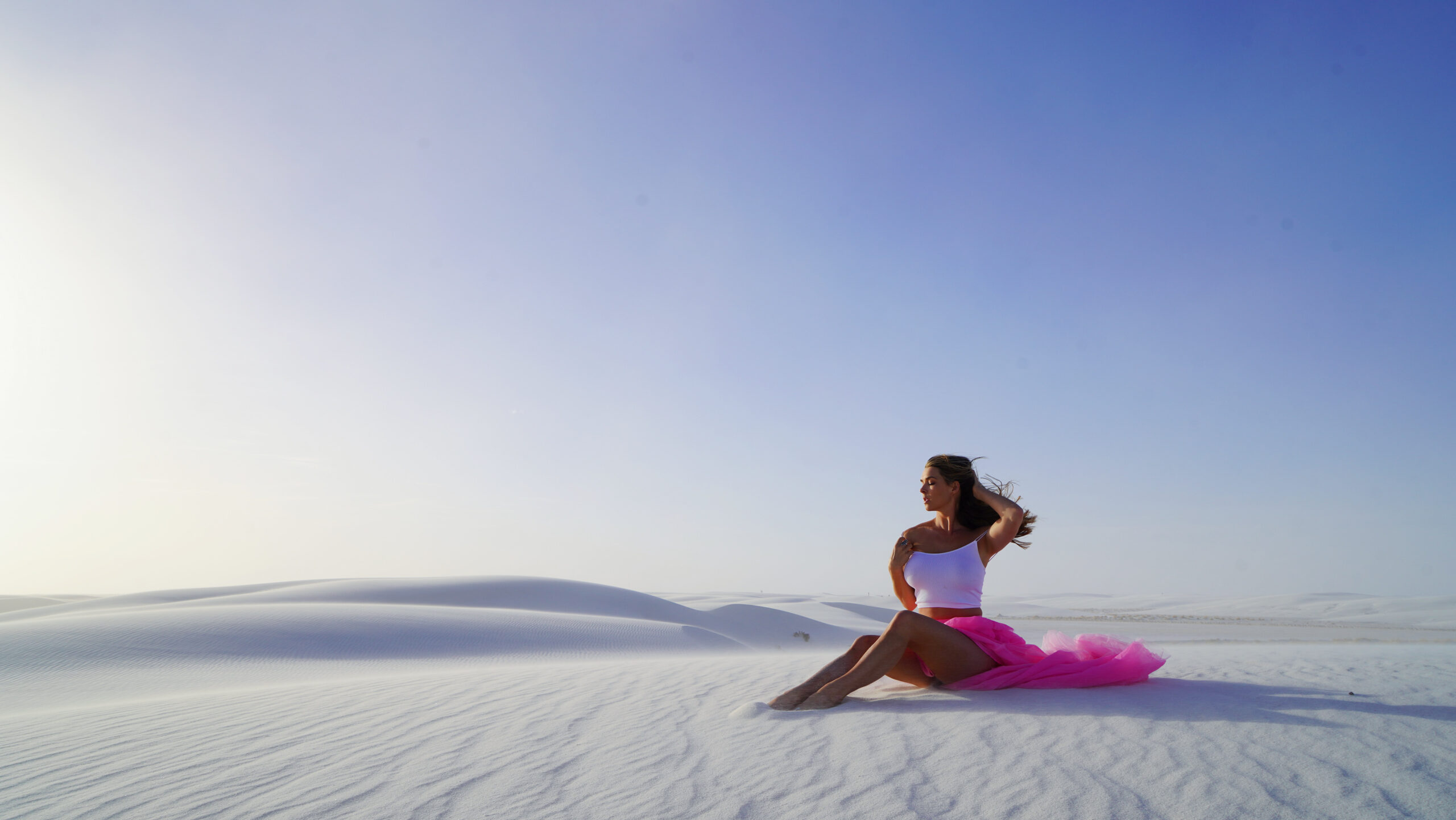
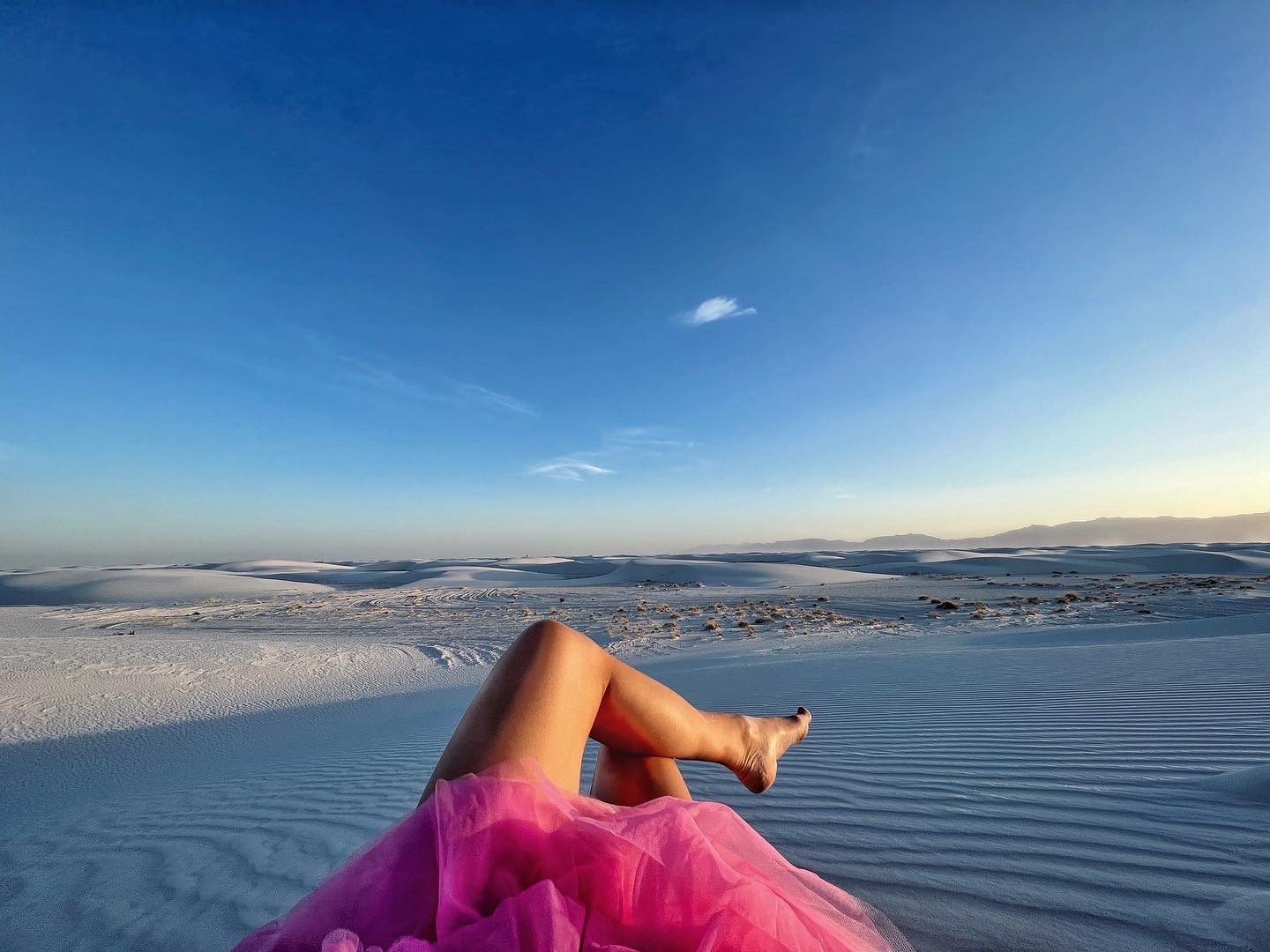
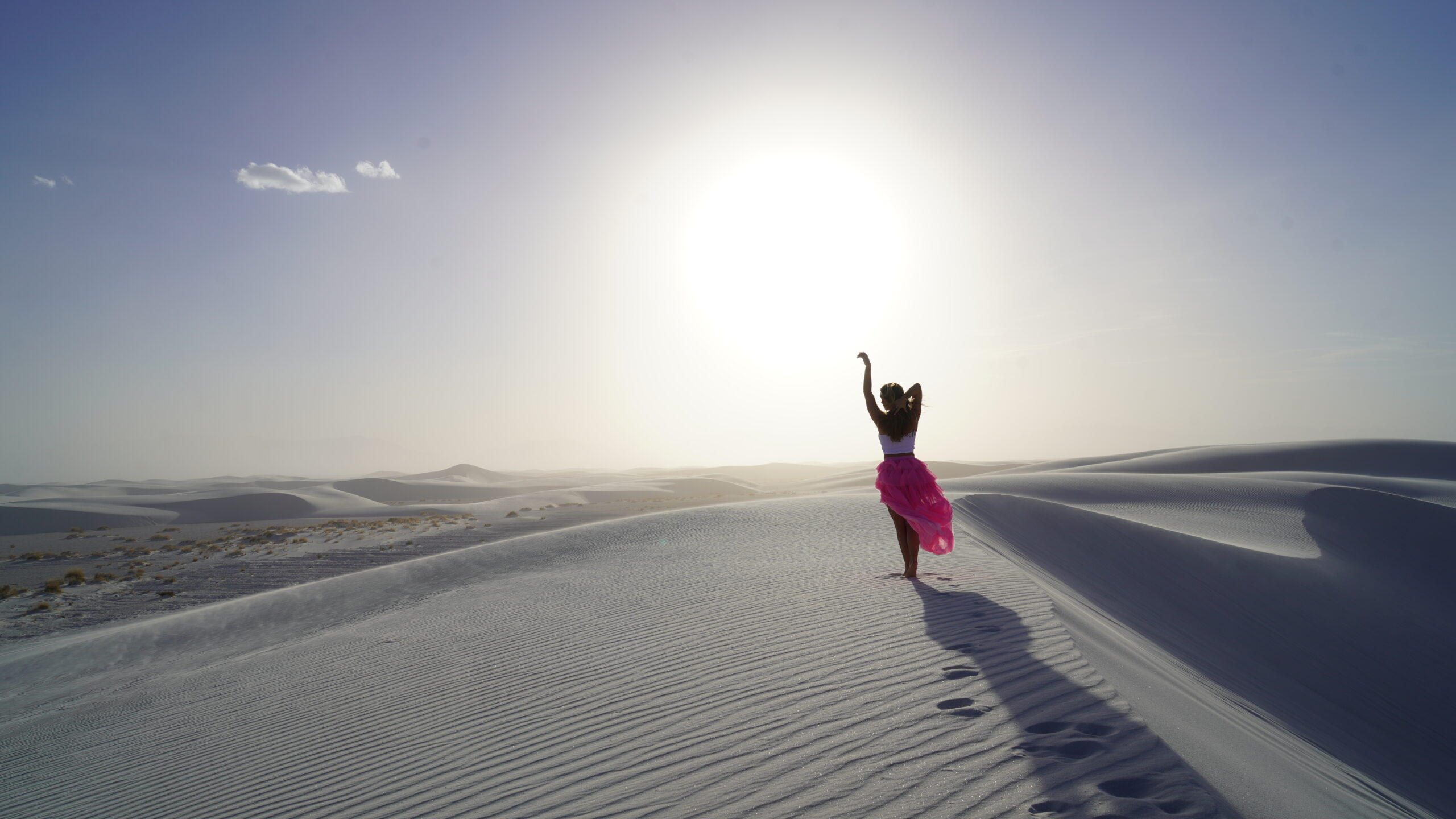

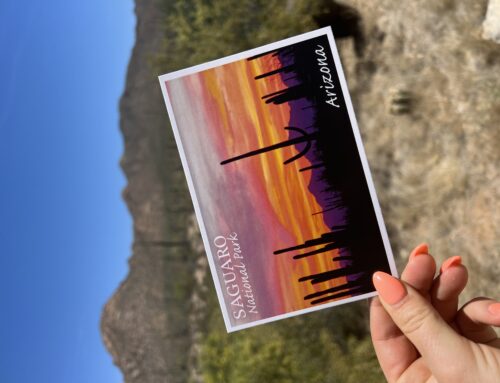
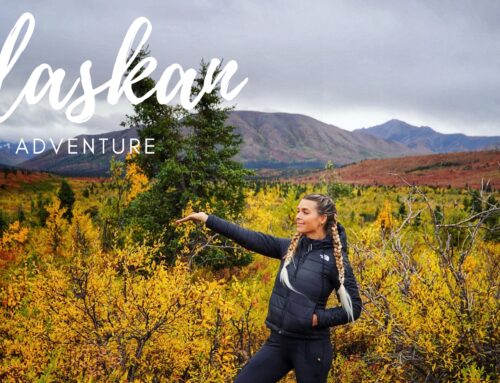



Leave A Comment